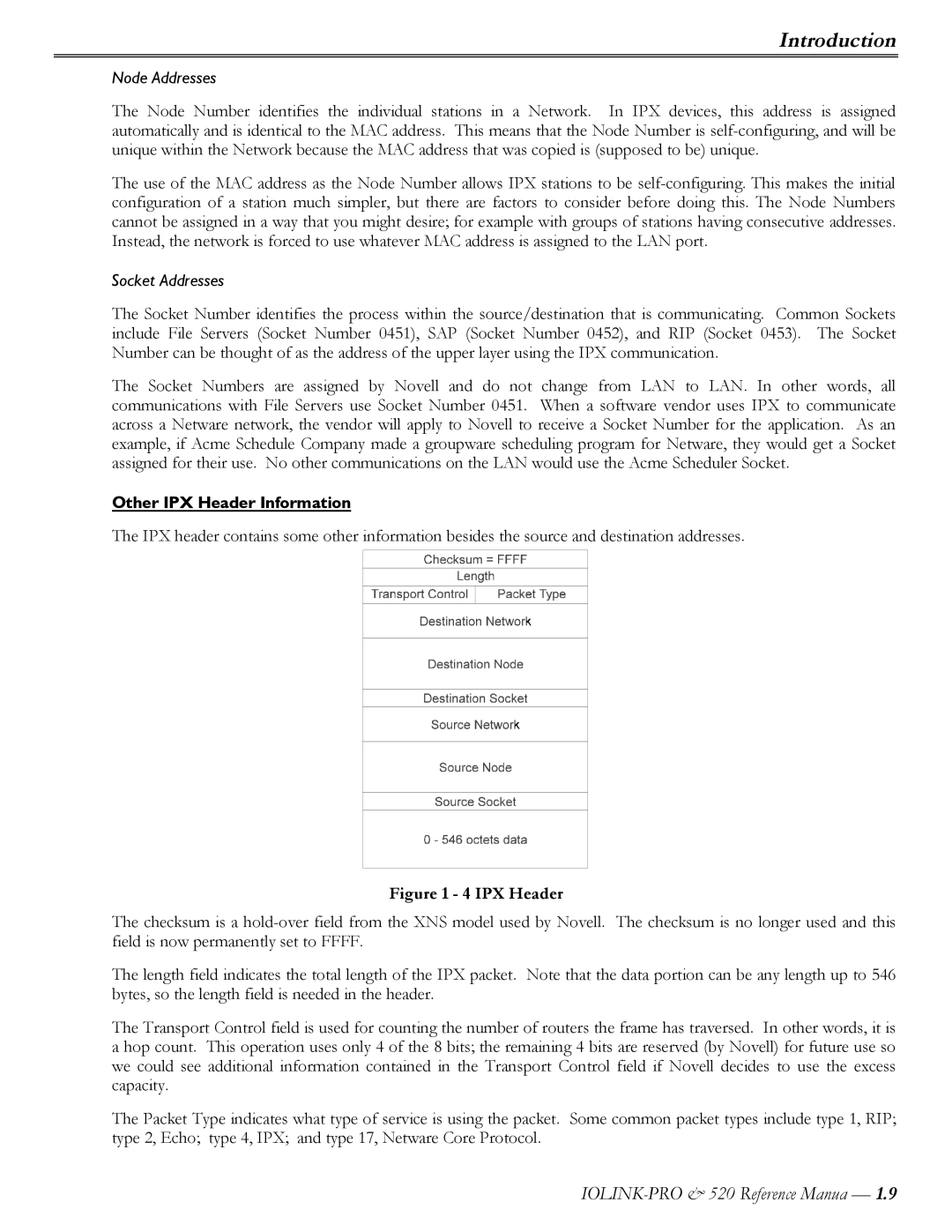
Introduction
Node Addresses
The Node Number identifies the individual stations in a Network. In IPX devices, this address is assigned automatically and is identical to the MAC address. This means that the Node Number is
The use of the MAC address as the Node Number allows IPX stations to be
Socket Addresses
The Socket Number identifies the process within the source/destination that is communicating. Common Sockets include File Servers (Socket Number 0451), SAP (Socket Number 0452), and RIP (Socket 0453). The Socket Number can be thought of as the address of the upper layer using the IPX communication.
The Socket Numbers are assigned by Novell and do not change from LAN to LAN. In other words, all communications with File Servers use Socket Number 0451. When a software vendor uses IPX to communicate across a Netware network, the vendor will apply to Novell to receive a Socket Number for the application. As an example, if Acme Schedule Company made a groupware scheduling program for Netware, they would get a Socket assigned for their use. No other communications on the LAN would use the Acme Scheduler Socket.
Other IPX Header Information
The IPX header contains some other information besides the source and destination addresses.
Figure 1 - 4 IPX Header
The checksum is a
The length field indicates the total length of the IPX packet. Note that the data portion can be any length up to 546 bytes, so the length field is needed in the header.
The Transport Control field is used for counting the number of routers the frame has traversed. In other words, it is a hop count. This operation uses only 4 of the 8 bits; the remaining 4 bits are reserved (by Novell) for future use so we could see additional information contained in the Transport Control field if Novell decides to use the excess capacity.
The Packet Type indicates what type of service is using the packet. Some common packet types include type 1, RIP; type 2, Echo; type 4, IPX; and type 17, Netware Core Protocol.
